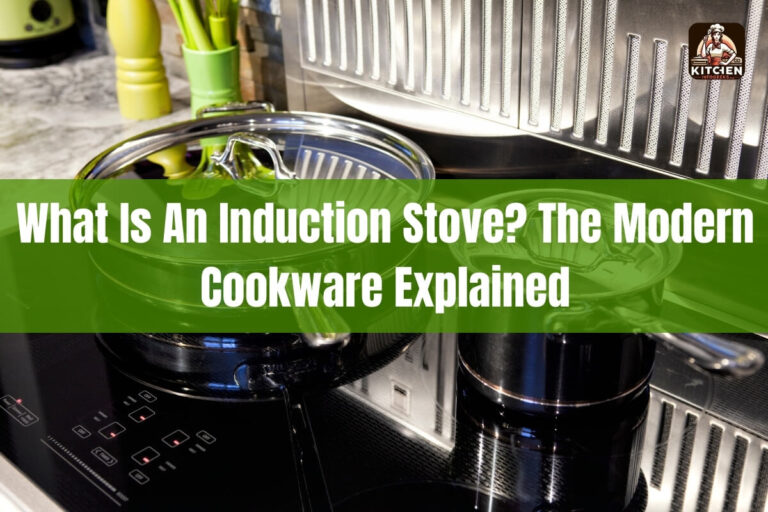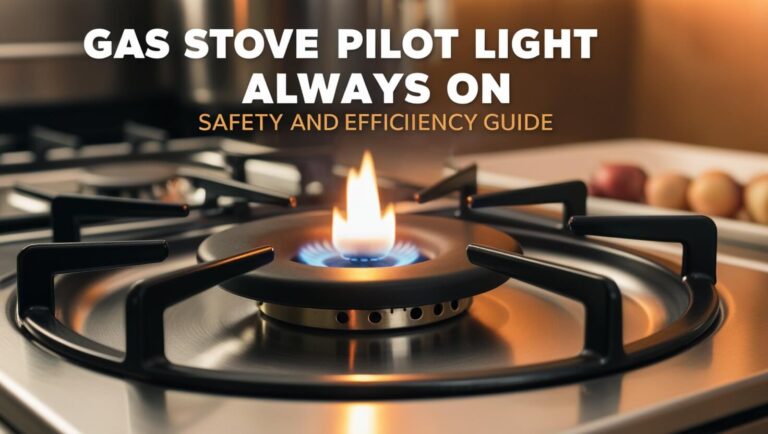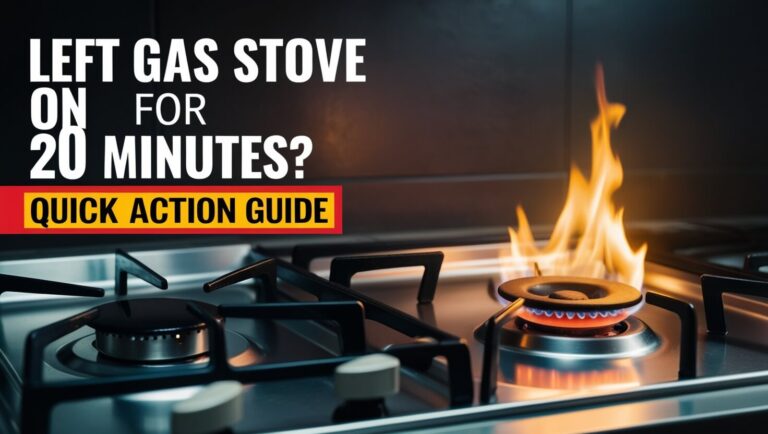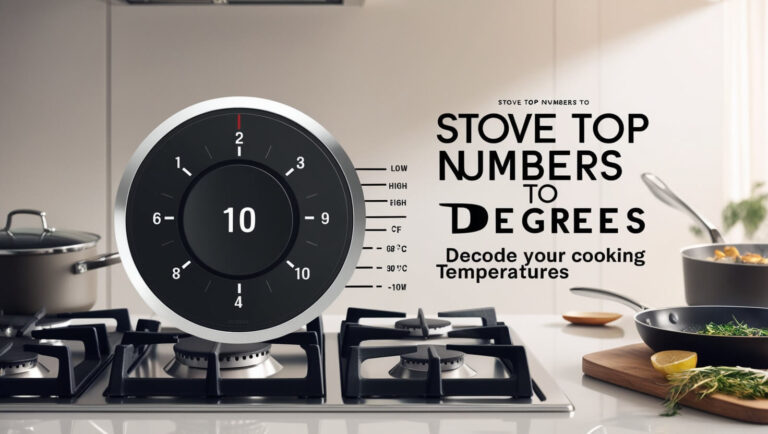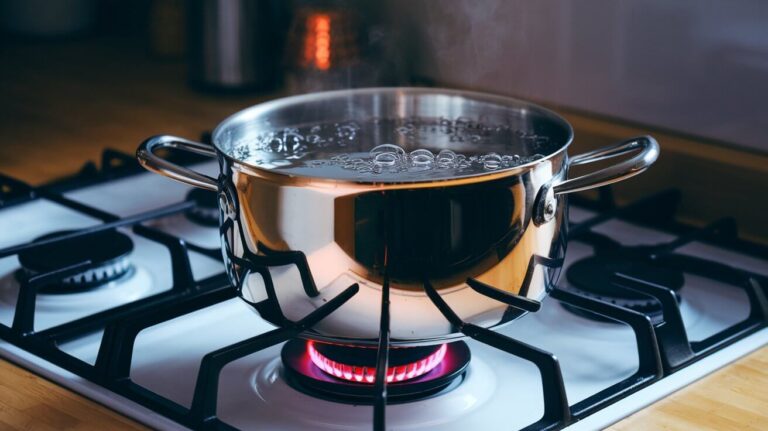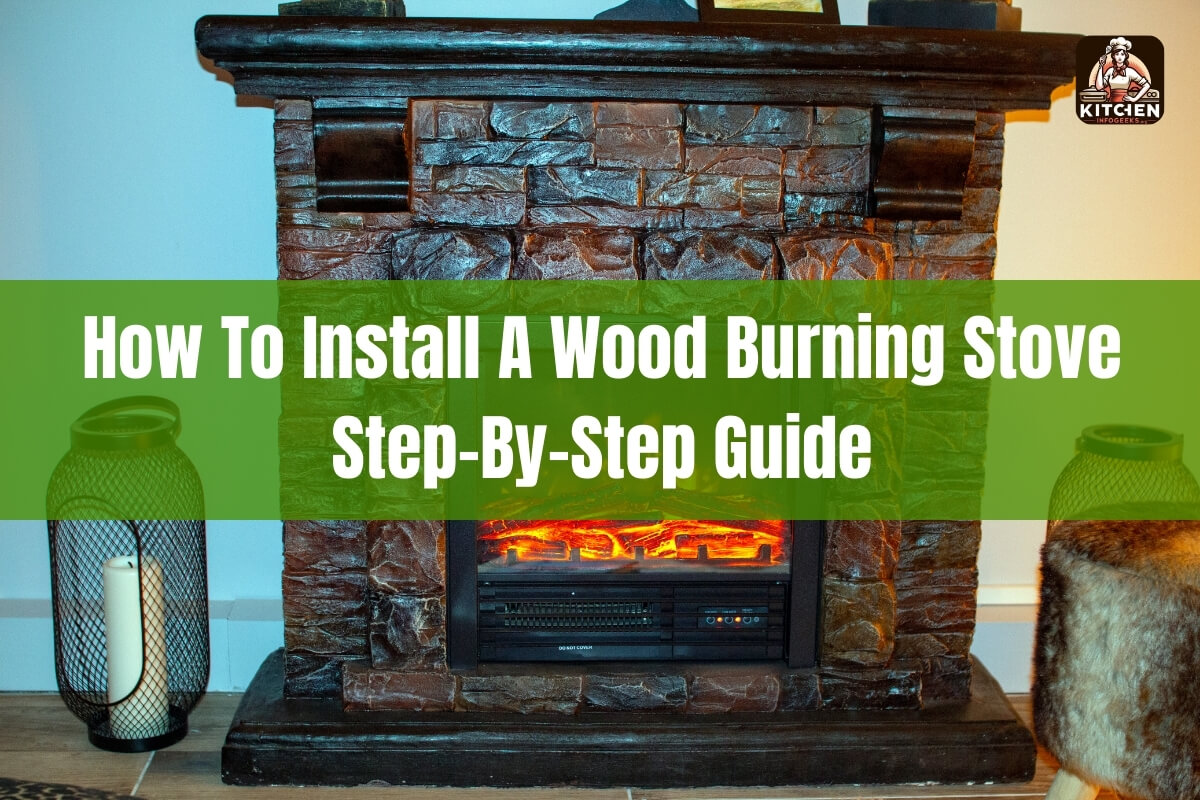
Are you thinking about installing a wood burning stove in your home? It’s a great way to add warmth, ambiance, and potential cost savings on your heating bill. However, the installation process can be complex and requires careful planning and execution to ensure safety and proper operation.
In this detailed guide, we’ll cover everything you need to know about how to install a wood burning stove, from choosing the right model and location to meeting building code requirements and creating a custom chimney breast. We’ll also discuss essential maintenance and operation tips to keep your stove running smoothly for years to come.
Why Install a Wood Burning Stove?
Before we dive into the installation process, let’s briefly explore the benefits of having a wood burning stove in your home:
- Cost-effective heating: Burning wood can be more economical than relying solely on traditional heating systems, especially in areas with abundant access to firewood.
- Cozy ambiance: The flickering flames and gentle crackle of a wood stove create a warm, inviting atmosphere that’s hard to replicate.
- Potential increase in home value: A well-installed and maintained wood stove can be an attractive selling point for potential buyers.
- Environmental benefits: When using sustainably sourced wood, a wood stove can be a more eco-friendly heating solution compared to fossil fuels.
Now that you understand the advantages, let’s get started on the installation process.
Preparing for Your Wood Stove Installation
Installing a wood burning stove isn’t a simple task, and proper preparation is crucial. Here are the essential steps to take before you begin:
Choosing the Right Wood Stove Size and Type
Not all wood stoves are created equal. Consider the following factors when selecting your stove:
- Heating area: Determine the square footage of the space you want to heat and choose a stove with an appropriate heat output rating (measured in BTUs).
- Stove design: Wood stoves come in various designs, from traditional cast iron to modern steel or soapstone styles. Choose one that complements your home’s aesthetic.
- Fuel type: While most stoves burn seasoned cordwood, some models are designed for specific fuel types like pellets or coal.
Assessing Your Home’s Requirements
Will you be connecting your wood stove to an existing chimney or installing a new venting system? This decision will impact the installation process and required components.
If you have an existing chimney, have it inspected by a professional to ensure it’s in good condition and meets current building codes. If you don’t have a chimney, you’ll need to plan for a separate venting system, such as a twin-wall flue pipe or direct vent.
Obtaining Necessary Permits and Following Local Regulations
Before you begin your wood stove installation, check with your local authorities about any required permits and building codes. These regulations are in place to ensure safety and proper installation practices.
Additionally, inform your homeowner’s insurance provider about your plans to install a wood stove, as it may impact your coverage or rates.
Hiring a Professional Installer vs. DIY
While it’s possible to install a wood burning stove yourself, it’s generally recommended to hire a professional, certified installer. They have the expertise and experience to ensure your stove is installed correctly and safely, reducing the risk of potential hazards like chimney fires or carbon monoxide leaks.
If you decide to tackle the installation yourself, be prepared to meticulously follow all manufacturer’s instructions and local building codes.
Essential Components for a Wood Burning Stove Installation
Regardless of whether you hire a pro or go the DIY route, you’ll need to gather the following components for a complete wood stove installation:
The Stove Itself
As mentioned earlier, choose a stove size, design, and heat output appropriate for your space. Consider factors like the stove’s efficiency rating, ash handling system, and ease of operation.
Chimney Systems
- Masonry chimneys: If you have an existing masonry chimney, it may need to be relined with an insulated stainless steel liner.
- Factory-built metal chimneys: These are available in various types, including air-cooled, insulated, and double-walled models.
Flue Pipes and Chimney Liners
The flue pipe connects your stove to the chimney system, while a chimney liner (for existing chimneys) helps improve draft and prevent creosote buildup.
Stove Hearth and Floor Protection
Your wood stove will need to rest on a non-combustible hearth or floor protection rated for the stove’s heat output. Common materials include stone, brick, or specialized hearth pads.
Additional Accessories
- Chimney cap: Helps prevent downdrafts, rain, and pests from entering the chimney.
- Fireproof sealants: Used to seal gaps between the stove pipe and chimney connections.
- Carbon monoxide detectors: Crucial for detecting any dangerous gas leaks from your stove.
With the necessary components in hand, you’re ready to begin the installation process.
Step 1: Choosing the Ideal Stove Location
Where you position your wood stove is critical for both safety and optimal performance. Here are the key considerations:
Clearances from Combustible Materials
Your stove’s manual will specify the minimum clearance distances required from combustible materials like walls, furniture, and draperies. Adhering to these clearances is essential to prevent potential fire hazards.
If the recommended clearances can’t be met, you may need to install non-combustible wall protection, such as cement board or metal heat shields.
Flooring Considerations
The area beneath and surrounding your stove must be protected with a non-combustible hearth or floor pad. This safeguards against embers or radiant heat damaging your flooring.
The size and heat-resistance requirements for your hearth will depend on your stove’s specifications and local building codes.
Ventilation Requirements
Wood stoves require a dedicated source of fresh air for proper combustion. If your home is well-insulated or airtight, you may need to install an exterior air intake directly connected to the stove.
Proper ventilation is crucial for preventing smoke spillage and ensuring efficient wood burning.
Step 2: Preparing for the Installation
With your stove location mapped out, it’s time to prepare the area for installation. This may involve the following steps:
Chimney Inspection and Cleaning (for Existing Chimneys)
If you’re connecting your stove to an existing chimney, have a professional chimney sweep inspect and clean the chimney before installation. They’ll ensure it’s structurally sound and free of obstructions or creosote buildup that could impede proper drafting.
Creating an Opening for a New Chimney Breast
If you’re installing a new chimney breast (more on this later), you’ll need to carefully create an opening in the wall for the chimney system to pass through. This may involve removing portions of drywall, framing, or masonry, depending on your home’s construction.
Flooring Preparation
Ensure the area where your stove hearth will be located is level, solid, and free of combustible materials. You may need to remove existing flooring or pour a concrete pad as a base for your non-combustible hearth material.
Ensuring Proper Ventilation
If your home requires additional ventilation for the wood stove, plan for the installation of an exterior air intake and any necessary ductwork or wall/ceiling openings.
With the preparatory work complete, you’re ready to begin the actual stove installation process.
Installing a Wood Burning Stove with an Existing Chimney
If your home has an existing chimney suitable for a wood stove, the installation process will involve the following steps:
Connecting the Stove to the Existing Chimney
First, position your stove in the desired location, adhering to the specified clearances from combustible materials. Then, connect the stove’s flue collar to the chimney using a properly sized and insulated stove pipe or chimney connector.
Installing Chimney Liners
In most cases, you’ll need to install a stainless steel chimney liner within your existing chimney to improve draft and prevent heat transfer or creosote buildup on the chimney walls.
The liner should extend from the stove’s flue collar all the way to the top of the chimney, with a cap or rain cover installed at the termination point.
Sealing Gaps and Openings
Any gaps or openings where the chimney system passes through floors, walls, or the roof must be properly sealed with fire-rated caulk or insulation to prevent heat transfer and potential fire hazards.
Additionally, a chimney-to-flue connector or adapter may be required to create a seamless transition between the stove pipe and chimney liner.
Installing Without an Existing Chimney
If your home doesn’t have an existing chimney suitable for a wood stove installation, don’t worry – you still have options. One of the most common solutions is to use a factory-built, double-walled metal chimney system known as a “twin-wall flue.”
Using a Twin-Wall Flue System
A twin-wall flue system consists of two concentric metal pipes with insulation sandwiched between them. This design allows the hot exhaust gases to safely vent to the outside while protecting combustible building materials from the high temperatures.
When installing a twin-wall flue system, you’ll need to decide on the routing – either through the interior of your home (typically through the attic and roof) or along the exterior wall.
Deciding on Internal vs. External Routing
Internal Routing: An interior twin-wall flue route is often preferred as it helps retain more heat within the living space. However, it requires creating openings through the ceiling(s) and roof, as well as ensuring proper clearances from combustibles along the vent path.
External Routing: Alternatively, you can run the twin-wall flue system up the exterior wall of your home. While this may be easier to install, it can result in more heat loss compared to an interior route.
Whichever path you choose, be sure to follow the manufacturer’s instructions and your local building codes regarding proper clearances, support, and termination heights.
Meeting Building Code Requirements
Building codes provide specific guidelines for installing wood stove venting systems without an existing chimney. Some key requirements may include:
- Maintaining minimum clearances from combustible materials (typically 2 inches for interior routes).
- Extending the flue termination a certain distance above the roof line and any nearby structures to promote proper drafting.
- Installing a listed chimney cap or rain cover at the termination point.
- Providing proper structural support for the flue system, especially if it extends a significant distance above the roof.
Additionally, you may need to incorporate features like a direct outdoor air intake or make provisions for future inspections and cleanings of the flue system.
By carefully adhering to all relevant building codes, you can ensure your twin-wall flue installation is safe, efficient, and up to standards.
Creating a False Chimney Breast
For many homeowners, a wood stove installation provides an opportunity to create a visually appealing focal point – a false chimney breast. This non-structural enclosure around the stove and venting system can add architectural interest and a traditional “built-in” look, even in homes without an existing chimney.
Design and Planning
Start by envisioning the size, shape, and style of your false chimney breast. Consider factors like:
- The dimensions of your stove and required clearances.
- How the flue system will be routed (through the chimney breast or behind it).
- The overall aesthetic you want to achieve – from a simple box enclosure to an elaborate carved design.
Sketch out your ideas, accounting for both the front façade and the depth/profile of the chimney breast structure.
Constructing the Framework
The key to a safe and sturdy false chimney breast is a properly constructed framework using non-combustible materials like metal studs or concrete boards.
- Build a solid, level base to support the weight of the finished structure.
- Erect vertical studs at the appropriate width to accommodate your stove, flue system, and desired chimney breast depth.
- Create openings as needed for the stove, flue pipe, and any other components that will pass through the chimney breast.
- Reinforce the top section with horizontal framing to create an enclosed chase.
Covering with Non-Combustible Boards
With the metal framework in place, you can begin covering it with non-combustible rigid boards like cement board or specially designed “fire-rated” drywall products.
- Cut boards to size, ensuring tight seams with minimal gaps.
- Use fire-rated sealants or tapes to create a continuous, sealed surface.
- Leave openings where needed for the stove opening, flue pipe passage, and any other required venting or access points.
Plastering and Finishing Touches
To achieve a seamless look, apply a smooth troweled plaster coating over the entire chimney breast structure. This unifies the individual boards and allows for unique texturing or carved details if desired.
Once the plastering is complete and fully cured, you can apply a heat-resistant paint or faux finish to match your décor preferences.
Don’t forget to also finish the interior of the chimney breast chase, ensuring all seams are properly sealed against potential heat transfer.
With some thoughtful planning and the right non-combustible materials, you can create a custom, built-in look that complements your new wood-burning stove installation.
Operating Your New Wood Burning Stove
With your wood stove successfully installed, it’s time to start enjoying the warmth and ambiance it provides. However, there are a few key operating principles to keep in mind:
Seasoning and Loading Wood
For optimal combustion and minimal creosote buildup, always use well-seasoned firewood with a moisture content below 20%. Unseasoned (“green”) wood can lead to excessive smoke, rapid creosote accumulation, and reduced efficiency.
When loading your stove, follow the manufacturer’s recommendations for proper wood orientation and maximum load amounts. Overloading can lead to overheating and potentially hazardous conditions.
Controlling Air Flow
Most modern wood stoves feature integrated air controls that regulate the rate of burn and heat output. Learn how to properly adjust these controls to achieve a hot, efficient burn when desired or to choke down the air supply for an extended, overnight burn.
Understanding the Break-In Period
During the first few fires in your new stove, you’ll want to take it easy and gradually increase the heat output over time. This allows the steel components to cure properly and prevents damage to the stove finish or refractory materials.
Refer to your manufacturer’s instructions for specifics on the break-in process, which may involve a series of small, controlled fires before ramping up to full operation.
Safety Considerations
Always exercise caution when operating your wood stove:
- Use proper fireplace tools and wear protective gloves when tending to the fire.
- Keep combustible materials like furniture, drapes, and firewood at a safe distance from the stove’s body.
- Install working smoke and carbon monoxide detectors nearby and check their operation regularly.
- Never leave a hot stove unattended, especially around children or pets.
- Follow all manufacturer guidelines for safe operation and maintenance.
By treating your wood stove with respect and adhering to best practices, you can enjoy its warmth and charm while minimizing any potential safety risks.
Maintaining Your Wood Burning Stove
Proper maintenance is essential for ensuring your wood burning stove operates safely and efficiently for years to come. Here are some key maintenance tasks to stay on top of:
Chimney Cleaning and Inspection
As you use your wood stove throughout the heating season, creosote (a flammable tar-like substance) will gradually build up inside the chimney system. Too much creosote accumulation can increase the risk of a dangerous chimney fire.
To prevent this, have your chimney professionally swept at least once per year – more frequently if you notice rapid buildup or glazing on the chimney walls. During this annual servicing, also have the chimney inspector carefully evaluate the overall condition of your system, looking for any signs of deterioration or potential hazards.
Ash Disposal
Regularly remove ashes from your wood stove’s firebox and dispose of them properly in a sealed, non-combustible metal container. Never store hot ashes inside your home or place them directly on combustible surfaces.
Signs of Required Repairs or Replacement
Throughout the lifetime of your wood stove installation, be vigilant for any signs that components may need repair or replacement, such as:
- Cracks, warping, or corrosion on the stove body or chimney system
- Deterioration of gaskets, firebricks, or baffle components within the stove
- Gaps, separations, or holes in the chimney system that could allow exhaust leakage
- Changes in stove or chimney performance, like poor draft or overheating
Addressing any issues promptly can help avoid larger, costlier problems down the road and keep your wood stove operating safely and efficiently.
Conclusion
Installing a wood burning stove is a multi-step process that requires careful planning, adherence to local codes and manufacturer guidelines, and a focus on safety every step of the way. But the cozy warmth and potential cost savings make the effort well worth it.
In this guide, we’ve covered everything from choosing the right stove for your needs to creating a custom chimney breast enclosure. We’ve discussed essential installation components, venting options for homes without existing chimneys, and best practices for operating and maintaining your new wood stove.

